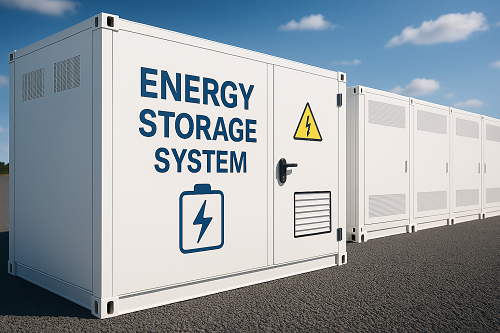In the pursuit of a more sustainable and resilient energy infrastructure, energy storage systems (ESS) have become a cornerstone technology. As the world increasingly shifts to renewable energy sources such as solar and wind, the ability to efficiently store and distribute energy becomes critical. Energy storage systems are not only helping to balance supply and demand, but are also changing the way electricity is produced, distributed and consumed.
What is an energy storage system?
An energy storage system is a technology that captures energy generated once for later use. These systems can store electrical energy in various forms (chemical, mechanical or thermal) and release it when needed. Energy storage systems range from large installations that serve the entire electrical grid to small home battery systems.
Types of energy storage systems
- Battery Energy Storage Systems (BESS): Batteries, especially lithium-ion batteries, are the most common type of energy storage system. They are widely used for their high efficiency, scalability and fast response times. Other battery chemistries include lead-acid, sodium-sulfur, and flow batteries.
- Pumped storage: this is the oldest and most established form of large-scale energy storage. It works by pumping water to higher elevations during times of excess power and releasing it through a turbine to generate electricity during times of peak demand.
- Compressed Air Energy Storage (CAES): Excess electricity is stored in compressed air in underground caves. When power is needed, the compressed air is heated and expanded to drive a turbine.
- Flywheel Energy Storage: This system stores energy in the form of rotational kinetic energy. It is known for its durability and ability to deliver high power for short periods of time.
- Thermal Energy Storage: These systems store heat or cold for later use. They are commonly used in heating, ventilation and air conditioning (HVAC) systems and help balance the energy load.
Importance of Energy Storage
- Grid Stability and Reliability: Energy storage systems (ESS) help stabilize the grid by managing voltage and frequency fluctuations, reducing outages, and providing backup power during outages.
- Renewable Energy Integration: Solar and wind energy are inherently intermittent. Energy storage technologies can store surplus energy generated during peak hours of sunlight or wind power and use it during peak electricity use.
- Cost Benefits: Storing energy during off-peak hours and releasing it during peak usage times reduces the cost of electricity and takes pressure off the grid infrastructure.
- Environmental benefits: Energy storage systems (ESS) can play a key role in reducing greenhouse gas emissions by facilitating the widespread use of renewable energy and reducing reliance on fossil fuels.
Future Outlook
The global energy storage systems market is expanding rapidly, driven by falling battery prices, policy support, and growing demand for clean energy. Innovations in solid-state batteries, artificial intelligence energy management systems, and secondary battery applications are expected to make energy storage systems more efficient and affordable.
Governments and utilities across the world are investing heavily in energy storage systems to meet climate goals and modernize power systems. The adoption of energy storage solutions in the residential, commercial and industrial sectors is expected to accelerate in the coming years.































